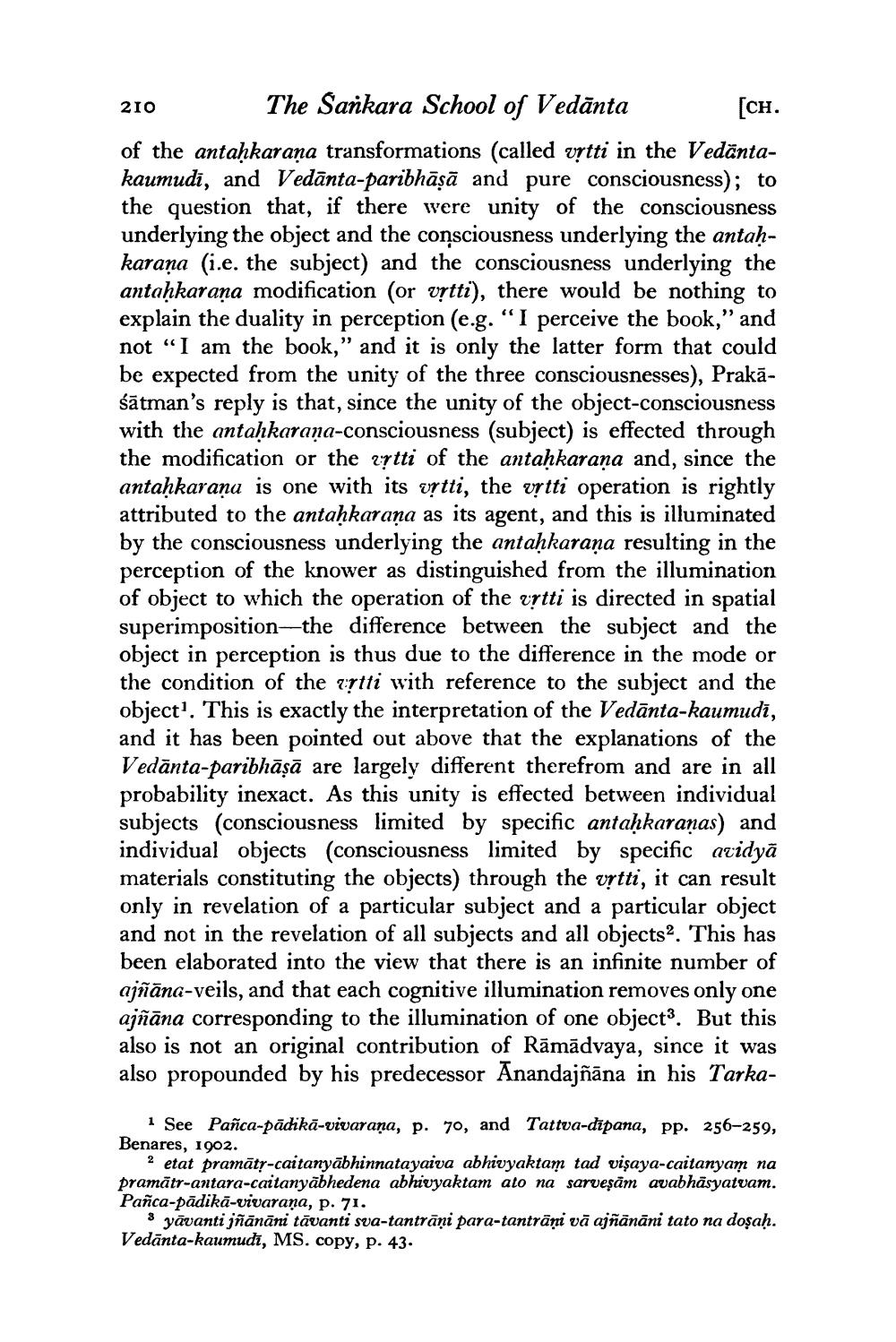________________
210 The Sankara School of Vedānta [CH. of the antahkarana transformations (called vrtti in the Vedāntakaumudi, and Vedānta-paribhāṣā and pure consciousness); to the question that, if there were unity of the consciousness underlying the object and the consciousness underlying the antaḥkaraña (i.e. the subject) and the consciousness underlying the antahkarana modification (or vịtti), there would be nothing to explain the duality in perception (e.g. "I perceive the book," and not "I am the book," and it is only the latter form that could be expected from the unity of the three consciousnesses), Prakāśātman's reply is that, since the unity of the object-consciousness with the antahkarana-consciousness (subject) is effected through the modification or the rytti of the antaḥkaraņa and, since the antahkarana is one with its ortti, the vrtti operation is rightly attributed to the antahkarana as its agent, and this is illuminated by the consciousness underlying the antaḥkaraṇa resulting in the perception of the knower as distinguished from the illumination of object to which the operation of the vrtti is directed in spatial superimposition—the difference between the subject and the object in perception is thus due to the difference in the mode or the condition of the atti with reference to the subject and the object. This is exactly the interpretation of the Vedānta-kaumudī, and it has been pointed out above that the explanations of the Vedānta-paribhāṣā are largely different therefrom and are in all probability inexact. As this unity is effected between individual subjects (consciousness limited by specific antaḥkaranas) and individual objects (consciousness limited by specific acidyā materials constituting the objects) through the vrtti, it can result only in revelation of a particular subject and a particular object and not in the revelation of all subjects and all objects. This has been elaborated into the view that there is an infinite number of ajñāna-veils, and that each cognitive illumination removes only one ajñāna corresponding to the illumination of one object?. But this also is not an original contribution of Rāmādvaya, since it was also propounded by his predecessor Anandajñāna in his Tarka
1 See Pañca-pādikā-vivarana, p. 70, and Tattva-dīpana, pp. 256-259, Benares, 1902.
2 etat pramātr-caitanyābhinnatayaiva abhivyaktam tad visaya-caitanyam na pramātr-antara-caitanyabhedena abhivyaktam ato na sarveşām avabhāsyatvam. Pañca-pädikā-vivarana, p. 71.
3 yāvanti jñānāni tāvanti sva-tantrāņi para-tantrāņi vā ajñānāni tato na doṣaḥ. Vedānta-kaumudi, MS. copy, p. 43.




